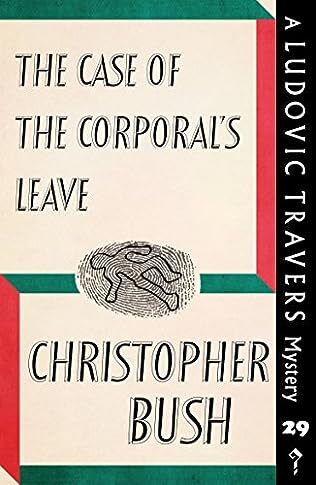The Case Of The Corporal’s Leave

A review of The Case of the Corporal’s Leave by Christopher Bush – 230725
I seem to be going through a run of murder mysteries which present two solutions. Christopher Bush’s twenty-ninth novel in his Ludovic Travers series, originally published in 1945 and reissued by Dean Street Press, is a case in point where Travers, now discharged from the army and acting as a special consultant to the Yard and his old sparring partner, Superintendent George Wharton, come up with two radically different interpretations of the events. To add spice to the proceedings Travers has a death on his conscience, his attempts to force the issue causing a suspect to take their own life, although his claims to have been a murderer seem to stretch the point somewhat.
Travers’ change of role adds a different perspective to his sleuthing. He is no longer the gentleman amateur sleuth but part of the Scotland Yard machinery, ostensibly taking direction from Wharton, although given a relatively free hand. The relationship between the two has always been fractious and a lot of Travers’ narrative deals with his disappointment that Wharton does not open up more to him with his thoughts and theories and that he is only too willing to take credit for the ideas of others, only after sitting on the fence to see whether there is any substance in the theories or not. From Wharton’s perspective working with Travers can be a frustrating experience as he too is prone to develop and work on his own theories only to pull the metaphorical rabbit in the form of a plausible solution out of the hat at the last minute and often to the discomfort of one of the Yard’s senior officers.
A character firmly in the wings is Travers’ wife, Bernice. She is continuing her war service as a nurse up north and the couple seem to live their married life separately, only communicating by letter. In this case Travers encounters two femmes fatales and it is clear that it would not take much for him to veer off track. Perhaps when the war is over Bernice will become more than the most peripheral of peripheral characters and perhaps, Olive Owen-like, become a sounding board for Travers’ more outré theories. We will see.
The principal murder victim, Sir William Pelle, is another character who has a wafer-thin skull, always a useful device for causing the death of someone the assailant did not intend to kill. Pelle, a retired Indian civil servant who has recently taken over responsibility for the gifts section of a charity, the Indian Famine Relief Fund, and on his way to meet Francis Kenray to have some jewels valued that he was carrying around in an attaché case goes missing. His body is later found in a railway wagon having had his head stoved in and with visible traces of sugar on his clothing. Who killed him, why and what happened to the jewels forms the basis of the investigation.
Along the way we meet some interesting characters, some picaresque, like the jewellery thief Harry the Snoot, some outlandish like Bertram Dale, one of the last of the great Edwardian eccentrics, and some mysterious and alluring at the same time, like Grace Allbeck imbued with great physical strength, and Marion Blaketon, who runs the Prisoners’ Reformation Society, which the Yard believes to be a front for more nefarious activities. Charitable organisations that might or might not be meeting their lofty aspirations is a minor theme in the book.
The imminence of the eponymous Corporal’s leave deters Trigg from informing the authorities that he had discovered Pelle’s body in his truck and removed it into a railway waggon, a vital piece of evidence that Travers unearthed through cultivating Kenray’s employee, Tom Fulcher. A bomb dropping from the sky in true deus ex machina style injuring Travers and killing Wharton’s principal suspect and a suicide wrap up the General’s case for him, but had it also saved him from having egg on his face if Travers’ reconstruction of the curious affair of Sir William Pelle was correct?
As usual with Bush, we have a well-constructed plot that dovetails the two interpretations of events nicely and there are enough clues diligently spread through the text to enable the reader to make up their own mind as to which version is correct. However, I felt the book as a whole lacked the urgency and spirit I usually associate with a Bush novel. It was enjoyable but not one of his best.



